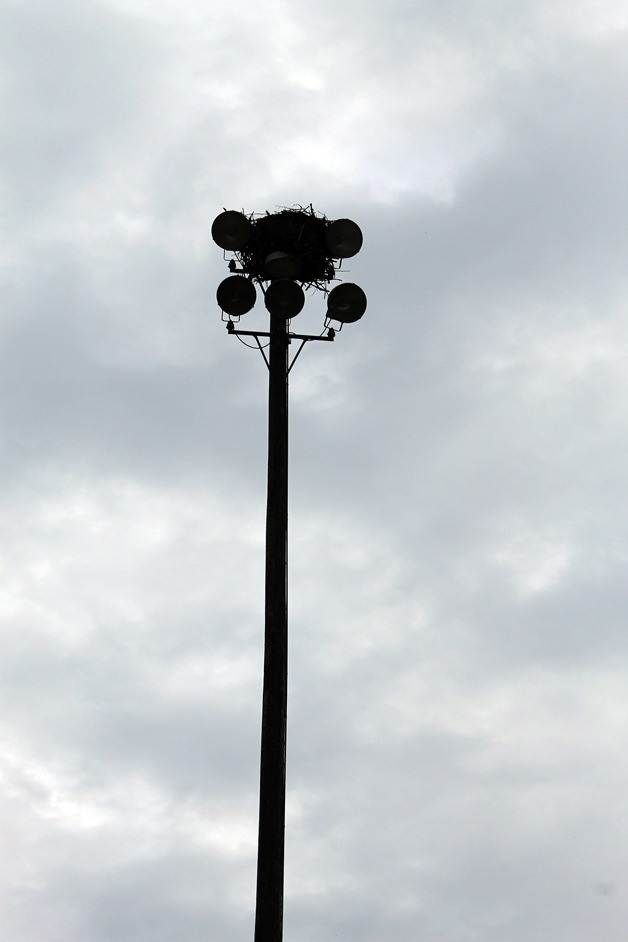A couple of ospreys will be returning from their southern migration to a brand new nest location come springtime.
The nest is presently located atop a 100-foot light pole on the South Whidbey High School football field. The South Whidbey School District, Puget Sound Energy, Whidbey Audubon Society and Osprey Solutions are working together to relocate the nest to a more favorable location.
Brian Miller, director of facilities for the school district, presented the issue to Osprey Solutions, a Seattle-based environmental consulting firm, which suggested the implementation of a nest platform and new post.
The company has successfully provided similar nest solutions for numerous communities including Portland, Ore., Seattle, Spokane and Bellevue, and is headed by raptor biologist Jim Kaiser.
In its current place, the nest is potentially hazardous to both humans and birds, Miller said.
Droppings of twigs and bird feces from the nest present a potential hazard to passersby while the structural integrity of the pole is compromised by the size and weight of the nest, according to Miller.
The heat of the field lights could ignite the nest and injure or kill the osprey, a federally protected raptor species.
According to Osprey Solutions, the average diameter of an osprey nest is 41 inches, and the nests typically accumulate enough material to weigh at least 650 pounds after 15 breeding seasons. Ospreys return north from their winter migration to the Southwest and Mexico and add more materials to their nests each year.
The post installation cost of $3,000 will be funded by Puget Sound Energy (PSE). The Whidbey Audubon Society will donate $600 for the new platform. The remainder of the cost, about $3,100, will be paid for by the school district.
According to Mel Walters, PSE’s Avian Program manager, PSE has relocated about 60 osprey nests thus far. He explained that the osprey’s natural nesting place, snags atop tall mature trees, has been largely annihilated due to such trees being felled and young trees not being permitted to mature. Walters said that about 50 percent of Washington’s ospreys have become accustomed to nesting atop power poles instead of tree snags since they were raised in nests built upon such artificial structures.
“My experience working with ospreys for many, many years is if you don’t give them a place to nest they’ll nest where you don’t want them to,” he said.
All eight light poles at the high school field will be retrofitted with raptor nest excluder devices to inhibit osprey from perching or nesting there.
The nest platform will be composed of lightweight, high strength aluminum alloy supported by a frame of angle aluminum. The bottom of the nesting box will be a lattice of plastic; there is also a four-inch plastic border to help contain the nest. A cedar perch,situated downwind and parallel to the nest, will provide a safe place for adult osprey to guard their nestlings from aerial predators. An anti-predator guard constructed of aluminum sheeting will be situated on the pole about 10 feet off the ground to prevent ground predators from climbing to the nest.
Workers will be required to inspect the nest periodically in order to remove fishing wire or any other materials that may harm the birds.
Originally, Miller had hoped to be able to install a web camera on the new post for educational purposes but determined that the $2,000 cost was too expensive.
At last week’s school board meeting, Director Damian Greene said the district will accept a donated camera if anyone in the community would like to contribute. Superintendent Jo Moccia confirmed that a plaque of recognition would be installed if anyone was willing to do so.



